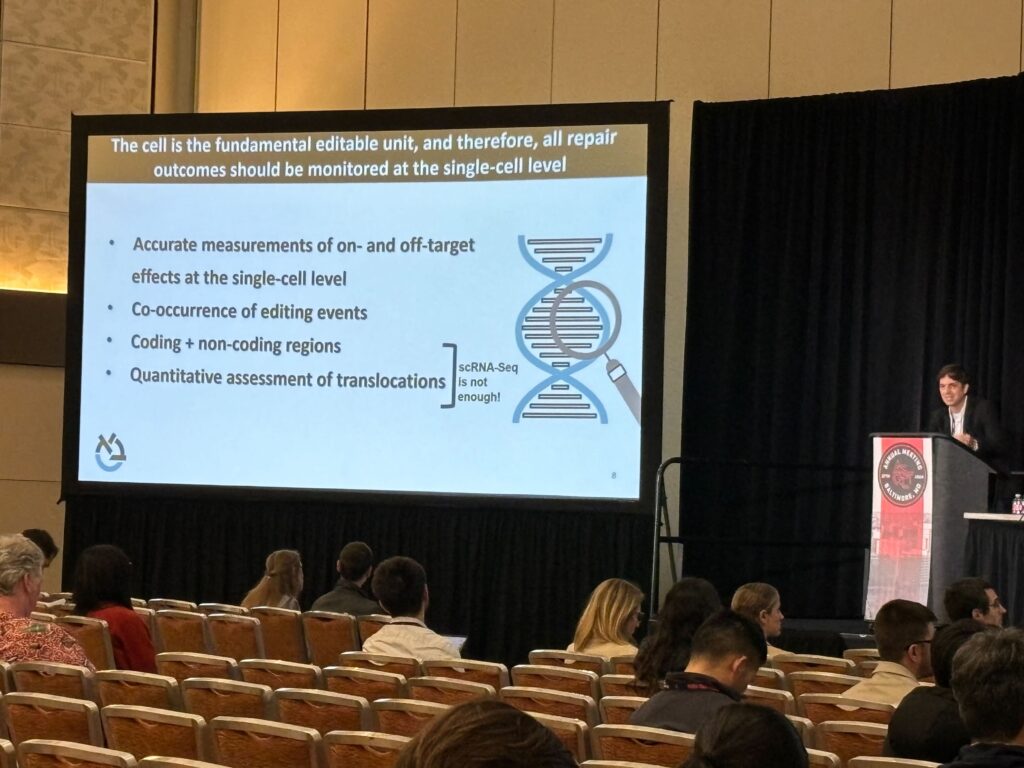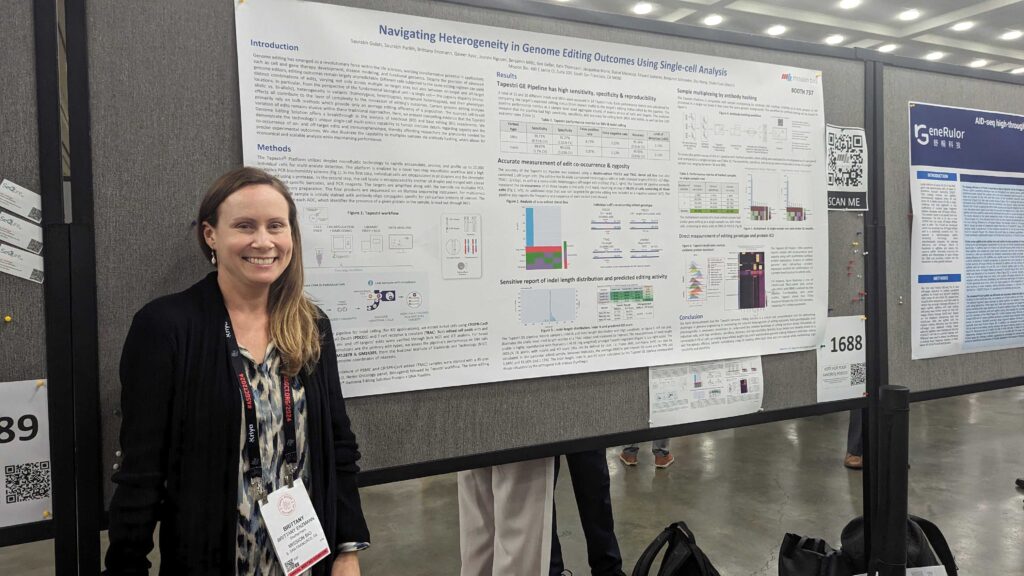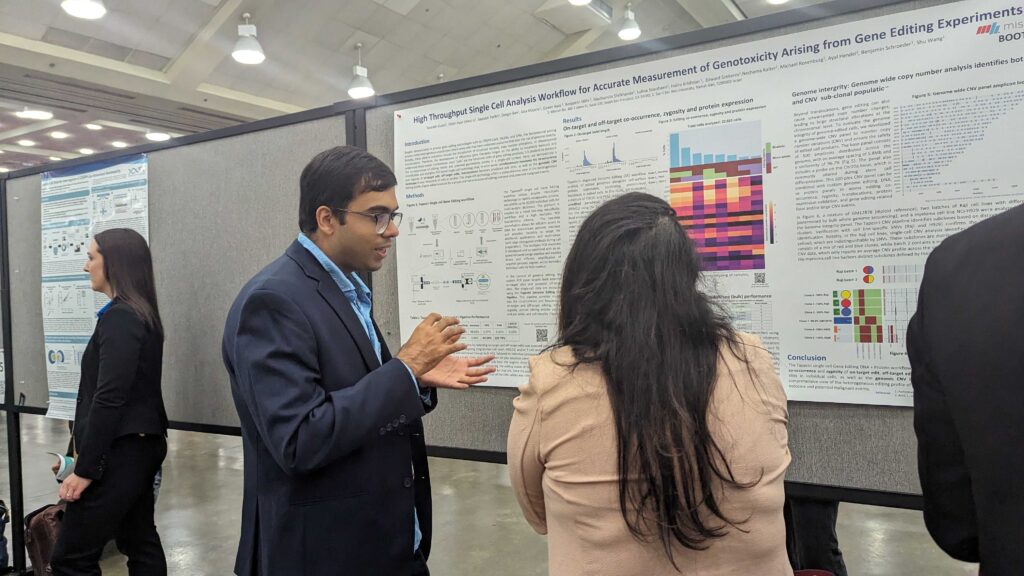In May, the Mission Bio team introduced a new single-cell capability that enhances the detection of chromosomal translocations in gene-edited cell products. Editing techniques like CRISPR can lead to off-target edits due to the inadvertent cutting of the genome beyond the intended target sites, resulting in unwanted insertions and deletions (indels) or structural variants such as translocations, which have been linked to the development of cancer.
This product update, showcased at the 24th Annual American Society of Gene & Cell Therapy (ASGCT) Meeting, signified a critical addition to the Tapestri Genome Editing Solution, enabling researchers to conduct more comprehensive analysis of genome editing outcomes that also includes on- and off-target edit confirmation, zygosity, and co-occurrence of edits at single-cell resolution. The solution aims to improve the safety and efficiency of therapeutics during early development, such as CRISPR-engineered CAR-T and stem cell-based therapies.

Fig. 1. The Tapestri Genome Editing Solution analyzes multiple genome editing outcome attributes, now, with chromosomal translocations.
ASGCT 2024 Presentations Highlighted the Utility of the Tapestri Genome Editing Solution
In a selected oral presentation titled, “Precise Measurement of CRISPR Genome-editing Outcomes Through Single-cell DNA Sequencing,” Dr. Ayal Hendel from Bar-Ilan University emphasized the importance of this technology in advancing CRISPR-based therapeutics by enabling robust profiling of off-target effects and enhancing the delivery of life-saving treatments for genetic disorders.
Said Dr. Hendel, “The cell is the fundamental editable unit, and therefore, all repair outcomes should be monitored at the single-cell level.”

Fig. 2. Dr. Ayal Hendel, Bar-Ila University, delivers a presentation on detecting off-target CRISPR events.
The Mission Bio team also presented posters highlighting single–cell genome editing analysis:
Dr. Brittany Enzmann, product manager at Mission Bio presented “Navigating Heterogeneity in Genome Editing Outcomes Using Single-Cell Analysis,” demonstrating Tapestri single-cell multi-omics analysis of CRISPR knockout (KO) and base editing (BE) experiment, providing intricate details regarding zygosity and the co-occurrence of on- and off-target edits and immunophenotype. The poster also illustrates the capability to multiplex samples via antibody hashing, which allows for economical and scalable analysis while maintaining performance.

Fig. 3. Dr. Brittany Enzmann presents on the Tapestri Genome Editing Solution at the 24th Annual ASGCT Meeting.
Saurabh Gulati, senior bioinformatics scientist at Mission Bio presented. “High Throughput Single Cell Analysis Workflow for Accurate Measurement of Genotoxicity Arising From Gene Editing Experiments,” covering co-occurrence of editing results and potential genotoxicity events in a single-cell context.

Fig. 4. Saurabh Gulati speaks with an ASGCT delegate about measuring genotoxicity in gene-edited cell products.
Mission Bio Mixer Unites Cell and Gene Therapy Leaders
The Mission Bio team also hosted a “Mission Bio Mixer” event, which was a vibrant gathering that united cell and gene therapy scientist leaders from government, industry, and academia, creating a dynamic space for collaboration, reconnection, and celebration. Held in a lively and historic Lord Baltimore Hotel, the event provided a unique opportunity for professionals across the sector to mix and mingle, sharing their latest advancements and insights in the rapidly evolving field of cell and gene-based therapy. Attendees were treated to engaging discussions and networking. This event not only fostered valuable connections but also reinforced the collective commitment to advancing innovative therapies that have the potential to transform patient outcomes.










